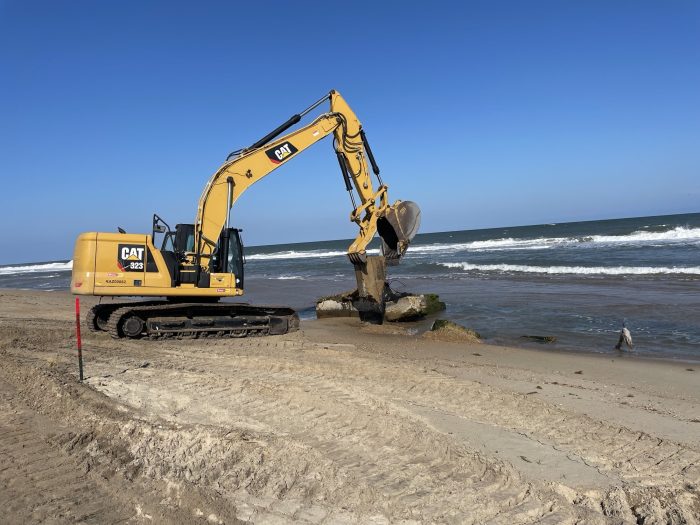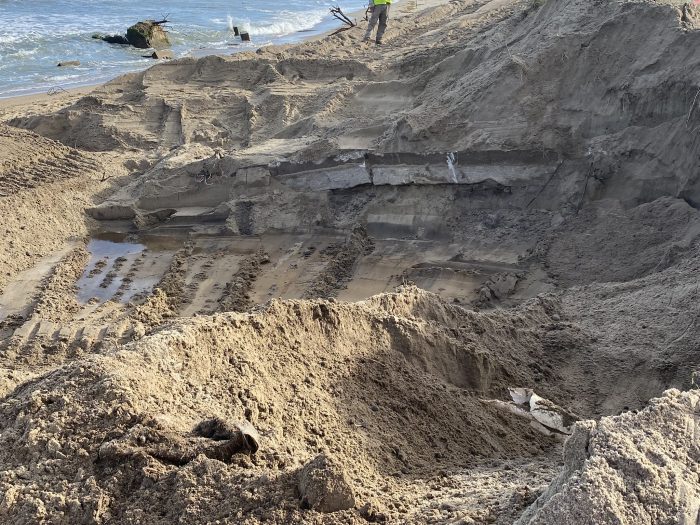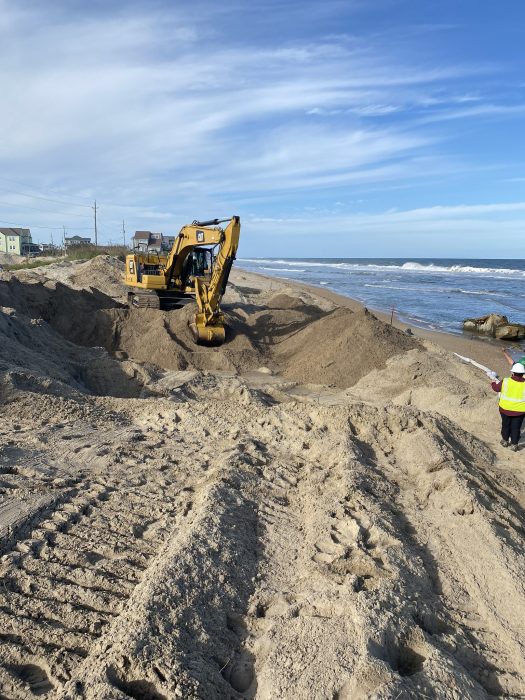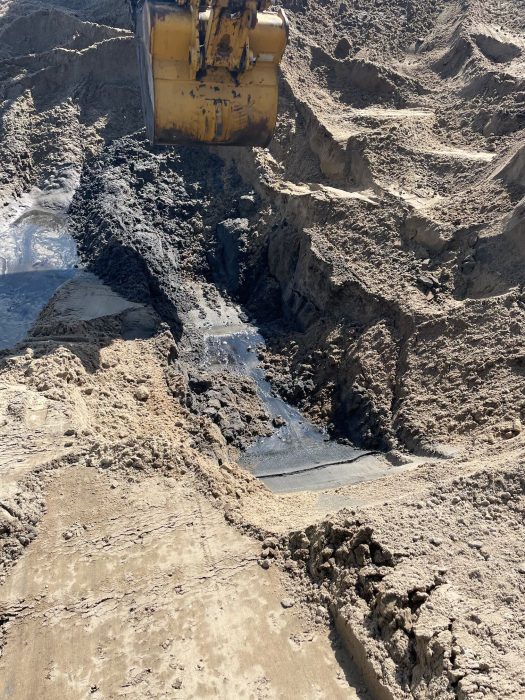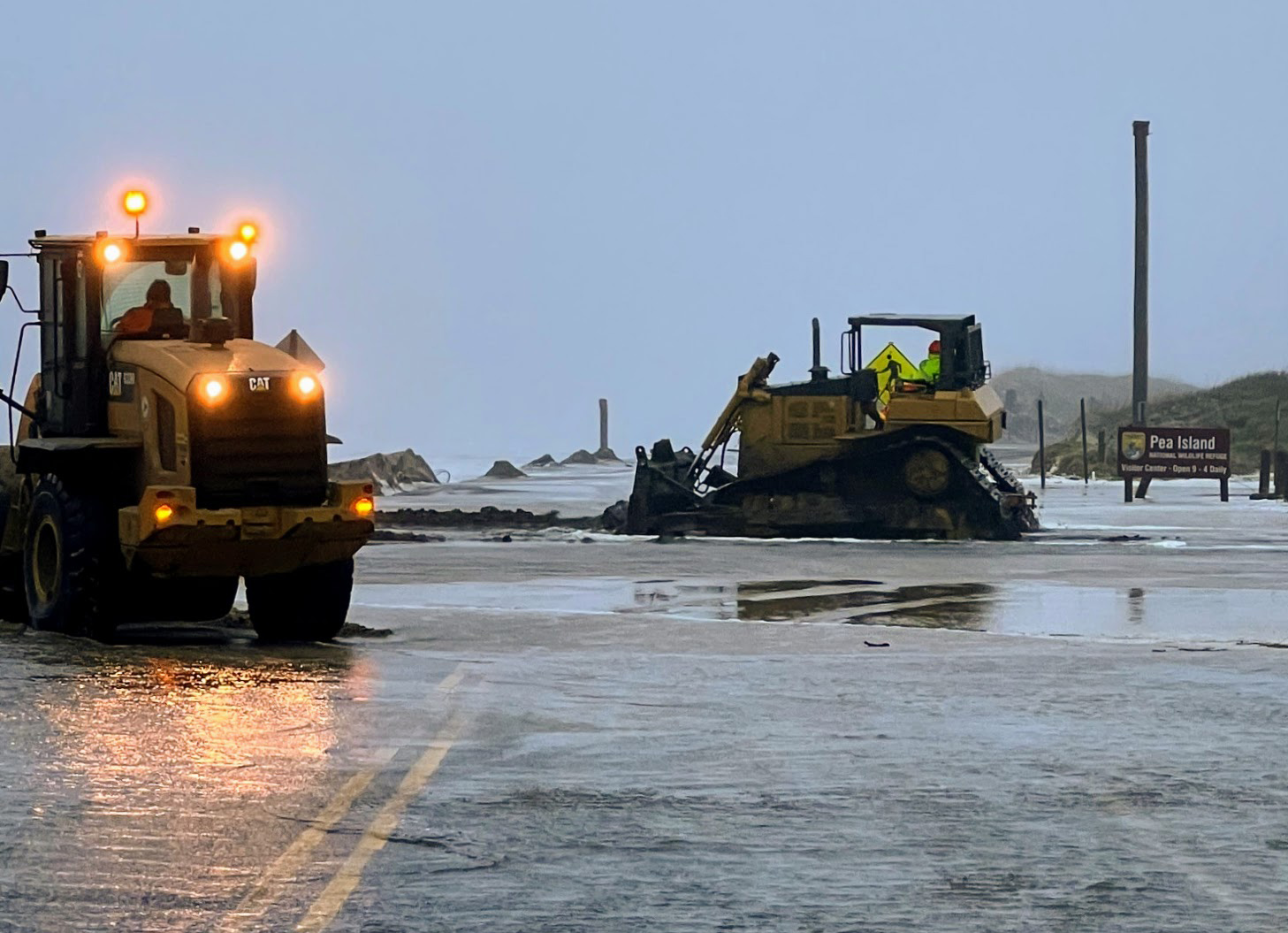Coast Guard releases CERCLA investigation findings from former Buxton Beach facilities

The results of the Coast Guard’s year-long investigation at Buxton Beach found no “actionable levels” of contaminants from the Coast Guard’s use of the site. The National Park Service is reviewing these findings.
On Friday, October 4, the U.S. Coast Guard (USCG) released the findings of a Comprehensive Environmental Response, Compensation and Liability Act (CERCLA) investigation that was conducted at the site of the former Navy/USCG base along Buxton Beach.
Coast Guard Civil Engineering Unit Cleveland initiated the site investigation in August 2023 to identify any contamination resulting from legacy operations that may have been conducted by the Coast Guard at Old Group Cape Hatteras between 1982 and 2013. For most of this timeframe, the USCG used the Buxton site as a logistical, communication, medical, and supply support center for the four Outer Banks-area Coast Guard stations.
“In accordance with the U.S. Code and U.S. Environmental Protection Agency regulations the CERCLA investigation sought to determine actionable remediation levels associated with volatile organic compounds, semi-volatile organic compounds, heavy metals, and chlorinated solvents,” stated a Friday press release from the USCG. “The investigation findings concluded that there are no actionable levels of these contaminants resulting from past Coast Guard operations at the sites.”
A copy of the report was also obtained by the National Park Service (NPS), the landowner of the roughly 50-acre Buxton property. The NPS stated that they could not comment on the lack of actionable findings until the 1,664-page report was thoroughly evaluated.
“The Coast Guard’s CERCLA investigation report is under review by the National Park Service’s technical experts,” said Mike Barber, Public Affairs Specialist for the NPS Outer Banks Group. “We expect it will take some time for a thorough review of the report.”
The site inspection “consisted of the advancement of 96 soil borings to a maximum depth of 10 feet below ground surface,” according to the USCG. “Additionally, WSP USA Environmental and Infrastructure Inc. installed 19 temporary monitoring wells and provided analysis of 23 groundwater samples… The Coast Guard remains a committed partner to the National Park Service and the Army Corps of Engineers as this remediation effort continues under the Formerly Used Defense Site program.”
The full CERCLA investigation report can be accessed here.

A small section of Buxton Beach at the end of Old Lighthouse Beach has been closed to the public for over a year after two offshore hurricanes eroded the shoreline and revealed leftover infrastructure from the active 1956-2010 military base, as well as sporadic but strong petroleum smells.
The consensus by stakeholders is that there are two agencies – the U.S. Army Corps of Engineers (Corps) and the U.S. Coast Guard – who are responsible for cleaning up the site.
Because the Buxton Beach site is part of the Formerly Used Defense Site (FUDS) program, the Corps is responsible for addressing the petroleum contaminants related to Navy activity from 1956-1982, while the USCG is responsible for other potential contaminants that surfaced during their subsequent use of the property.
Debate remains on what agency will address the leftover military infrastructure, such as the concrete foundation of the Navy’s former Terminal Building, or the dune-embedded PVC pipes which are from the Coast Guard’s former drain field.
A history of USCG operations at Buxton Beach
In 1984, the Coast Guard officially began using the Buxton Beach Access under a Memorandum of Understanding (MOU) with the Cape Hatteras National Seashore (CHNS), which can be viewed here.
The 1984 MOU “was issued conditional upon removing all improvements and restoring the site to park land upon ceasing operations,” according to CHNS.
In 2001, the MOU between CHNS and the Coast Guard was replaced by a General Agreement (GA), which can be viewed here.
The GA obligated the Coast Guard to remove the existing structures which included 16 buildings, a tennis court, softball field, swimming pool, sewage treatment plant, two steam boilers, two diesel generators, and a TV tower, and restore the landscape.
The GA also required the Coast Guard, prior to vacating the land, to “conduct a hazardous materials site survey and be responsible for any associated cleanup or mitigation costs and actions.”
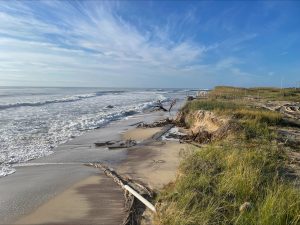
The following is a summary of Coast Guard-orchestrated actions following the 2001 GA, according to the CHNS website.
- In 2005, the Coast Guard announced its intentions to decommission the base after damage to the facilities from storms. The Coast Guard placed both the base facilities and the housing tracts with the General Services Administration (GSA) for disposition, which was completed in 2012.
- In 2008, the Coast Guard’s Cleveland Engineering Unit (CEU) completed a Phase I Environmental Site Assessment; however, the Seashore determined that the report did not thoroughly address all the environmental issues at the site and hired an independent contractor to assist in reviewing the report and recommendations.
- In 2010, the Coast Guard completed a Supplemental Soil Assessment Report for the wastewater facilities on the site which identified semi-volatile organic compounds (SVOC), metals, pesticides, and polychlorinated biphenyls (PCB) compounds were present in soil at concentrations above EPA standards. This report identified potential impacts beneath the wastewater facilities but did not delineate the extent of any potential contaminants.
- In 2012, the demolition of some of the wastewater facilities was completed, but did not include removal and/or remediation of the two drain fields which were to be removed and remediated through the Comprehensive Environmental Response Compensation, and Liabilities Act (CERCLA) process.
- On October 30, 2013, the GA between Cape Hatteras National Seashore and the Coast Guard expired.
Meanwhile, the Corps is undertaking the largest response effort to date to address the petroleum contamination issues, which included hiring a contractor to remove contaminated soils in order to mitigate the petroleum release. This remediation project is ongoing.
A roughly half-mile section of Buxton Beach at the end of Old Lighthouse Beach remains closed due to these 13-month-old petroleum and debris issues.
